Welcome Ailsa to our community today! She’s here to show us how to create kid-friendly fabric paintings on knit material. The results she achieved on the School Bus T-shirt she sewed are simply stunning. Thank you so much, Ailsa, for sharing this fantastic tutorial!
Â
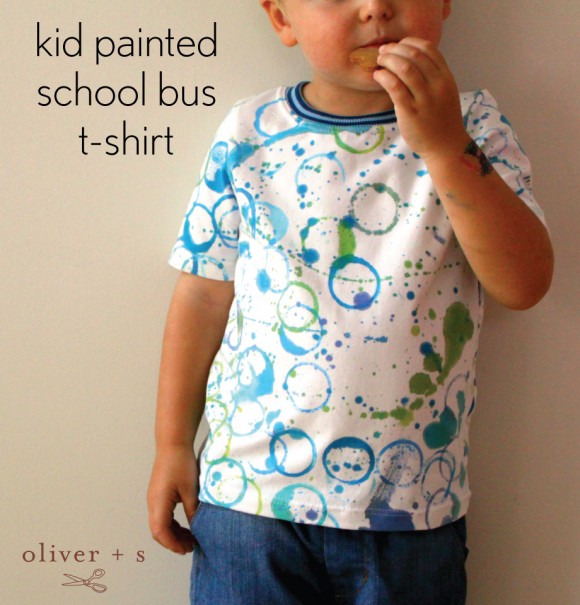
Â
Hi everyone, I’m Ailsa, and I live in Newcastle, Australia, where the weather is warm and inviting, even subtropical. Since we wear t-shirts throughout the year, I’m always on the lookout for excellent t-shirt patterns and interesting knit fabrics.
Â
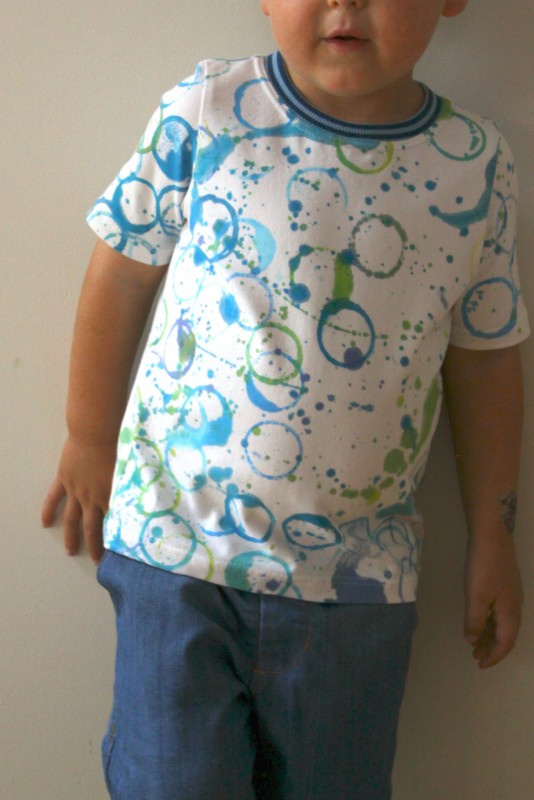
Â
Last year, during Kids Clothes Week, when the theme was “Kid Art,†I decided to experiment with this technique. I thought it would be fun to let the kids paint their own fabric and turn it into t-shirts. I hope you’ll find it just as exciting as I did!
Supplies Needed:
Â
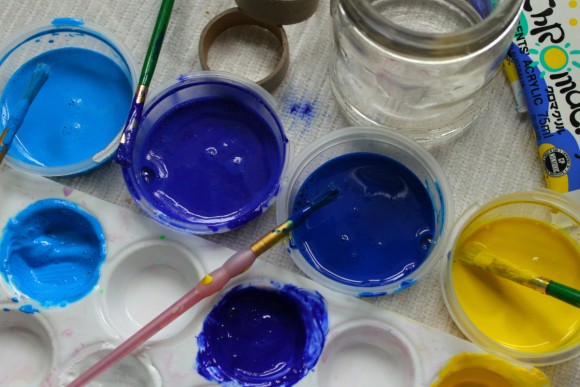
Â
- Acrylic Paint: You don’t need much—perhaps your kids already have some. We used this brand, but you could try something similar.
- Textile Medium: This additive mixes with the paint to help it adhere to fabric. I used this product, but you could also try another. Acrylic paint sticks to fabric, especially when you don’t want it to, but adding this medium ensures it won’t wash out easily.
- A palette, or plastic containers and brushes for mixing.
- Fabric: I prefer using knit jersey with good stretch (if possible, look for some with a bit of lycra). The School Bus T-shirt pattern recommends at least 25% stretch and provides tips on checking your fabric.
- Cardboard Tubes: Toilet rolls or kitchen wrap rolls work well. This time, we used the cardboard rings from washi tape rolls, which were perfect for small hands.
- Plastic Sheet: Or an old towel to protect your workspace. We did ours directly on the concrete driveway (it should wash off eventually!). If you’re painting on a pre-made shirt, place something inside to prevent paint from seeping through to the back.
Instructions:
Â

Â
Step 1: Mix the textile medium and paint as suggested by the manufacturer, then dilute it with water until it has the consistency of milk.
Step 2: Lay out the plastic sheet and fabric. Have fun! We started by dipping the cardboard rings into the paint and creating circle prints. Sometimes the paint would form bubbles at the end of the ring, which popped as we printed (much to the kids’ delight!). After organized printing, things turned chaotic with finger dabbing, brush dripping, and finally, dribbling the leftover paint onto the fabric.
Â
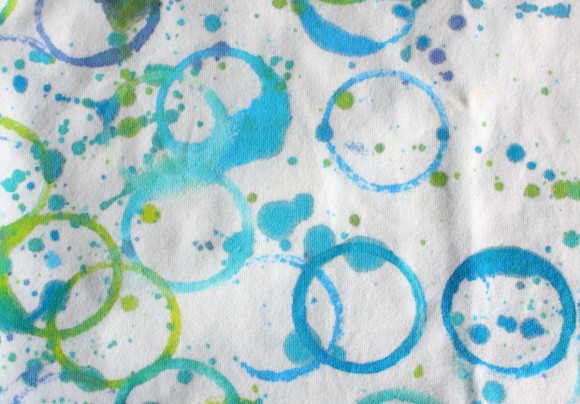
Â
The challenging part is knowing when to call it quits before everything turns into one big blob. If certain areas don’t turn out as expected, let the kids draw on them with fabric markers or a Sharpie-style permanent marker.
Â
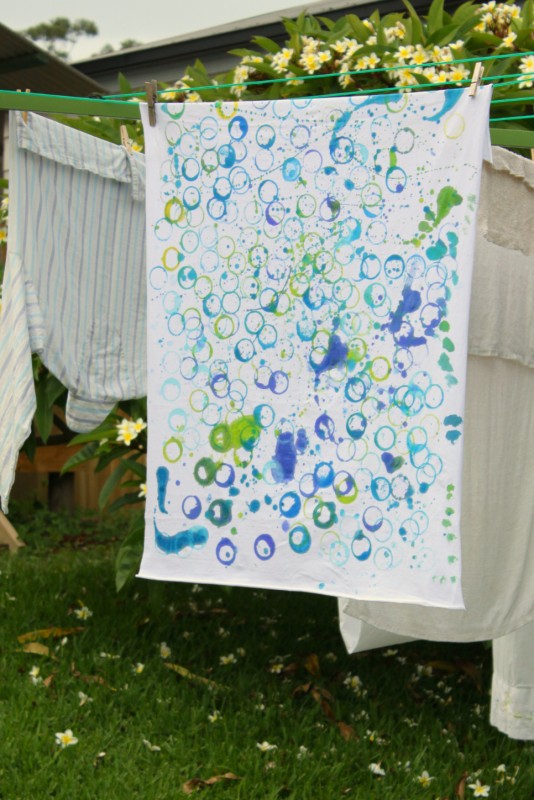
Â
Step 3: Let your fabric dry and heat-set it according to the manufacturer’s instructions. I ironed mine for the recommended time, but you could also use a clothes dryer.
Step 4: Sew! I made a straight size 5 for my chunky 3.5-year-old. This size fits him well, so the sizing on this pattern seems pretty standard. I followed the excellent instructions closely, with a few minor tweaks:
Â

Â
a) I traced two sleeves and the front and back pattern pieces at full width so I could carefully select which parts of the print to use.
b) BHA (Big Head Adjustment): My kids have large heads, so I make a “big head adjustment†on almost everything they pull over their heads. I trimmed 1/4 inch off around the front and back necklines. Then, I measured the new seam line (one seam allowance away from the pattern edge) and multiplied it by 3/4 to cut my neckband. I’ve used this Ottobre ribbing before, and it’s very stretchy, so I know this ratio works. For less stretchy bands, I might use 7/8. Figuring out neckband stretch is the part of knit sewing that took me a while to master, but I’m improving with practice.
Â
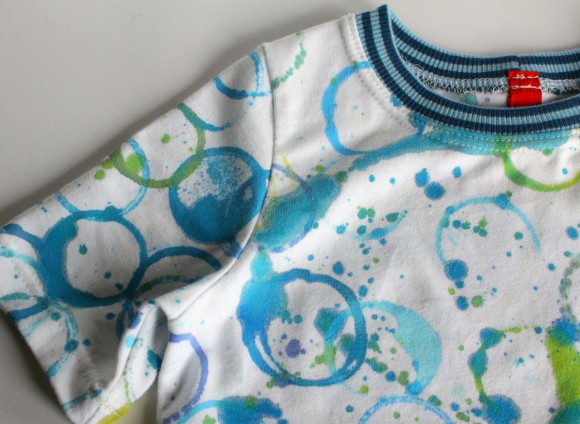
Â
c) I topstitched the neck with a double needle. Usually, I do a single, long but narrow zigzag around the neck to keep the seam allowance flat. This time, the double needle worked perfectly, so I continued with it!
As I wrote this tutorial, I started thinking about other ways to experiment with this technique...
- Other shapes for printing—like cookie-cutter stars. I wonder if plastic will work as well as cardboard? Or maybe corks or potato printing.
- Stripes with a paintbrush. A bit like Liesl’s, but more drippy and blotchy (in a three-year-old way).
- Placement printing. Cut out your fabric pieces before painting so you can position the prints exactly where you want them—around the hem or just over the shoulders, for example. My kids are still too young to follow this level of instruction.
- Bleach onto a dark fabric. Better try this without the kids!
- Galaxy print. Splatter colors onto the bleached areas to achieve something like these. Or recreate this fantastic fabric.
Okay, you get the idea… there’s a lot of fun to be had with fabric, paint, and a great basic t-shirt pattern. Thanks, Oliver + S, for having me, and thank you so much for reading!
Â

Â
(adsbygoogle = window.adsbygoogle || []).push({}); Â
Straw Beach Bag,Woven Beach Bag,Straw Bags For Summer,Rattan Crossbody Bag
ZHOUSHAN FOISON IMPORT AND EXPORT CO.,LTD. , https://www.foison-fashion.com